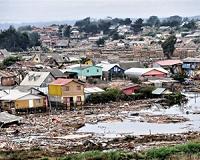| . |  |
. |
Miami (AFP) May 6, 2010 The Florida Keys at first glance appeared safe from the huge Gulf of Mexico oil spill lapping the US coast, but they are now awash in fear that a powerful undersea current could bring the slick streaming into the fragile ecosystem. The tourist haven is some 500 miles (800 kilometers) from the massive slick floating just off Louisiana. But should the unpredictable Loop Current -- part of the Gulf Stream -- bulge further northward than usual into the Gulf before its route east, it could spark environmental and economic catastrophe by dragging millions of gallons of oil straight into the keys. One concern would be the impact of the toxic crude on Florida's beaches and nature preserves such as those in the keys and the Dry Tortugas islands marine sanctuary, which include some of the largest and best preserved coral beds in the world. "It would be tragic if the contamination even indirectly affected the coral," Diego Lirman, a coral expert at the University of Miami's Rosenstiel School of Marine and Atmospheric Science, told AFP. The researcher warned of the high risk of widespread coral blight should the sensitive marine organisms be exposed to "the oil itself, as well as to the chemical dispersants being used to contain the spread of the spill." Another concern: Florida bills itself as the top travel destination in the world, with 80 million visitors in 2009 and a tourism industry that rakes in 60 billion dollars per year. Lirman said the same warm water currents which serve as a lifeline for the coral could ironically spell doom along a substantial portion of American coastline just when the summer tourist season is heating up, as the current's normal pattern is to flow from the Caribbean into the Gulf of Mexico, around the Florida peninsula, and then up the US East Coast. It would not be the first time the Loop Current has brought unwanted misery to the keys, Lirman noted. "There are precedents to this phenomenon, such as a red tide toxic algae which occurred near the Mississippi River and came to impact the keys, brought by the same currents that could now bring the oil," he said. Such a specter of disaster now haunts the Florida Keys, the picturesque chain of some 1,700 islands which arc from the state's southeast into the Gulf, ending at legendary Key West. "Although it is still too soon to predict if or how the Florida Keys may be impacted by the Deepwater Horizon spill, we are focused on preparing for whatever those impacts may be," said Captain Pat DeQuattro, commander of the US Coast Guard's Key West sector. National Weather Service forecasts have the slick expanding slightly to the west late Wednesday, with Florida's northwestern panhandle not coming into play at least for the next three days. The disaster began with a massive explosion April 20 on the BP-leased Deepwater Horizon rig which killed 11 workers. The rig sank two days later, rupturing the riser pipe that had connected the rig to the wellhead on the seafloor some 5,000 feet (1,500 meters) below the surface. The leaks are spewing out oil at an estimated 5,000 barrels, or 210,000 gallons, a day. Within 55 days the spill would top the 11 million gallons of crude that poured from the Exxon Valdez tanker into Prince William Sound in 1989, polluting over 1,000 miles of Alaska coastline. The Gulf slick now threatens a similar amount of coastline from Texas to Florida, much of it dotted by protected wetlands as well as economically vital shrimping and fishing areas. Long before the first -- if any -- of the oily sheen makes its way to the Florida Keys, the spill was already leaving its psychological mark on the region's tourism industry. "To some degree, this is the same as a hurricane," Florida Keys tourism director Harold Wheeler said, referring to the negative impact the spill was already having on keys visitors, some of whom he said are canceling their trips. "People see the Keys inside the forecasters' cone of a hurricane that is coming," he said. Scientists fear that an eddy, or swirling reverse current, could reach out and tug on the slick, dragging crude into the larger, more powerful Loop Current, which moves at about four miles per hour (six kilometers per hour). At that rate, the oil would take five to six days to reach the Florida Keys, University of Miami oceanography professor Lynn Keith Shay told the Key West Citizen newspaper.
Share This Article With Planet Earth
Related Links Bringing Order To A World Of Disasters A world of storm and tempest When the Earth Quakes
 Heavy rain drenches Chile quake survivors
Heavy rain drenches Chile quake survivorsConcepcion, Chile (AFP) May 5, 2010 The first heavy autumn rain fell in central and southern Chile on Wednesday, drenching thousands of survivors of the massive February 27 earthquake still living in tent refugee camps. Firefighters in Talcahuano - a port city 425 kilometers (260 miles) southwest of the capital Santiago - and the town of Chiguayante moved some 50 families from tent cities to shelters due to pouring rain, an ... read more |
|
| The content herein, unless otherwise known to be public domain, are Copyright 1995-2010 - SpaceDaily. AFP and UPI Wire Stories are copyright Agence France-Presse and United Press International. ESA Portal Reports are copyright European Space Agency. All NASA sourced material is public domain. Additional copyrights may apply in whole or part to other bona fide parties. Advertising does not imply endorsement,agreement or approval of any opinions, statements or information provided by SpaceDaily on any Web page published or hosted by SpaceDaily. Privacy Statement |